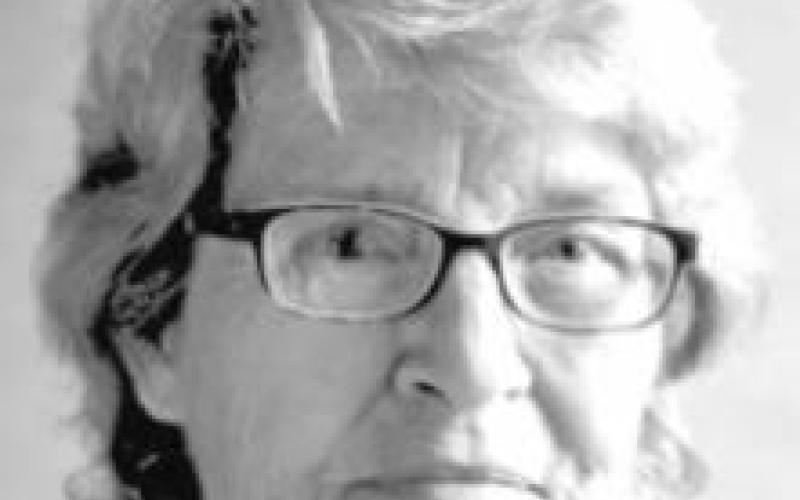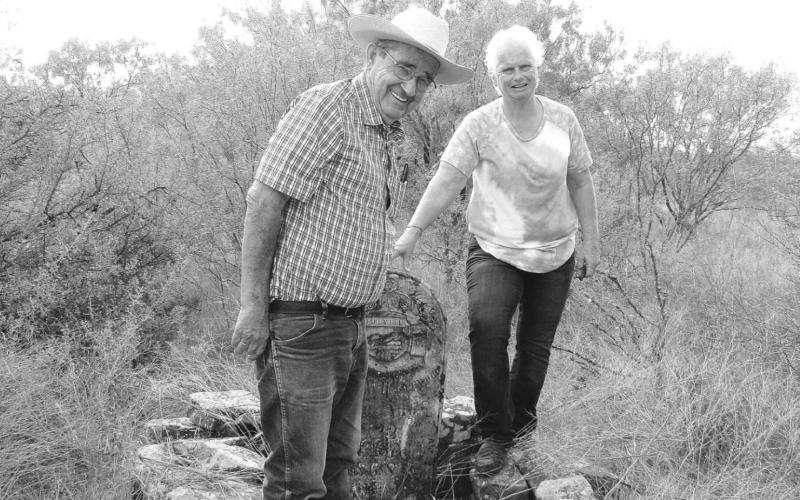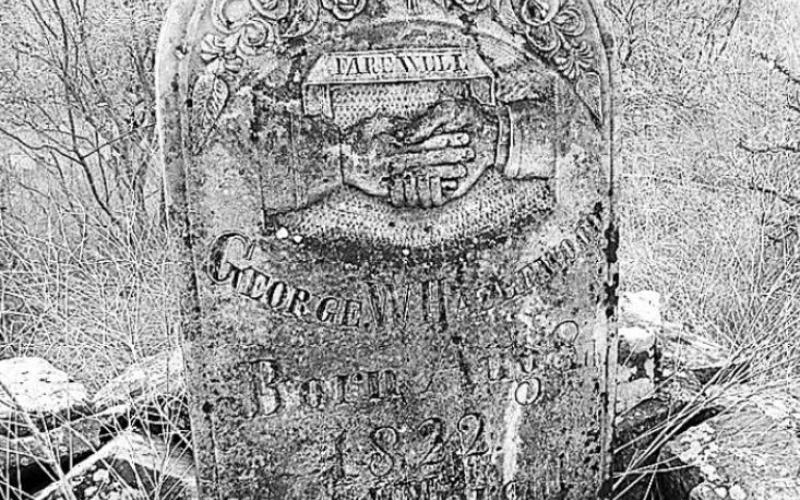Hazelwood kin visits Stephens County
I am taking a departure from the usual historical research, I have presented to the readers during the last few months. Those editorials feature the pioneers of Stephens County.
Instead, I want to tell you about recent visitors, John and Karen Hazelwood, who had come to Stephens County in search of the grave of his great-great-grandfather, George W. Hazelwood.
G.W. Hazelwood settled his family along Hubbard Creek and later Battle Creek in the far western part of Stephens County, almost to the Shackelford County line.
John and Karen Hazelwood had driven from their home in St. George, Utah in search of the grave of his great-great-grandfather, George W. Hazelwood, who had been portrayed in a story written by Betty Hanna in her book, "Doodlebugs & Cactus Berries," published in 1975.
The Hazelwood couple had found the relevant information on the internet about their ancestor, Hazelwood, and armed with the photo from Hanna's book thought it would be a 'piece of cake' to go right to the gravesite. In the story, there was a photo of his gravestone and explained that George W. Hazelwood was buried on land owned by Katey Mueller, a representative from another historic family in Stephens County.
With all this in hand, the Hazelwood couple drove to Stephens County and walked in the door of the Breckenridge American (B.A.) to enlist our help in locating the Mueller land and the Hazelwood gravesite.
Fortunately, I had written about their ancestor in a few columns back in 2009 and again in 2016 and was familiar with the story linked to the photo of Hazelwood and dug out my copy of Betty Hanna's book and copied the story behind the photo for the Hazelwood couple.
I also gave them copies of my columns where I had written about George. The next step was not as easy. I could not specifically direct them to the grave but sent them off to the Stephens County Courthouse to enlist the help of tracing who now owned the land where the tombstone/grave was located.
The folks at the courthouse also directed the Hazelwood couple to Dr. Brown of Albany, who was able to confirm that he knew exactly where the grave was located and gave them specific directions to the gravesite of George W. Hazelwood.
John and Karen almost drove directly to the property but had to enlist help from Tessa Compton and a ride in her four-wheeler to complete the trek to the edge of her property and the last steps were through the tangled cactus and overgrown weeds to the final destination, the grave/tombstone of George W. Hazelwood.
John and Karen Hazelwood said, "They were in awe and amazed to see the elaborate tombstone of their ancestor, George W. Hazelwood." John Hazelwood said, "It was obvious, to even the most casual visitor, that his great-great-grandfather's tombstone demonstrated how much he was honored by the fellow ranchers with a very elaborately carved tombstone for George W. Hazelwood that replaced the original plain tombstone portrayed in the Betty Hanna book, 'Doodlebugs & Cactus Berries.'"
As Paul Harvey would say, "Now here's the rest of the story."
As told in the Hanna book and other historic records about the event, George W. Hazelwood lived on a ranch near Hubbard Creek with his family, in the Spring of 1868. The local ranchers were out rounding up their cattle and branding the new calves.
Hazelwood had taken off on his own to find their horses, which had been hobbled the night before when they ended the previous day's activities. He was armed with his new Spencer rifle, one of the first in Stephens County, and nine cartridges. With his ownership of the Spencer rifle, one could assume that he was a rancher, who was a man of some financial means above that of other ranchers.
Unfortunately, about a mile from the ranch, Hazelwood encountered a band of about 35 Comanche Native Americans. He immediately jumped off his horse and into a raven that snaked its way back closer to the ranch house, where additional help was available. Unfortunately, on this particular day, there was a roaring sandstorm and none of the men at the ranch or those branding cattle would hear his rifle shots.
When Hazelwood failed to return in a reasonable time period, the men branding the calves, saddled up and went out looking for him.
The men soon began to track his movements along the raven, which was strung with arrows and rifle shells to about a half-mile from the ranch house.
They found Hazelwood surrounded by several dead Comanche Native Americans and signs of three or four litters, which demonstrated they were taking off their wounded.
One important note made abundantly clear was the Comanche tribesmen had not scalped their opponent before they left the scene, which was a sign that they honored the bravery of George W. Hazelwood. They did, however, take his new Spencer rifle and other personal items like his boots, but not a hair of his scalp.
Word quickly went out to Fort Griffin, located north of Albany, where the Texas Rangers resided. The Rangers and the Tonkawa Native American scouts immediately went out in hot pursuit of the Comanches and tracked them for more than 60 miles.
Their progress had been slowed by the three or four litters that carried their wounded. One litter carried an African American Chieftan, Cato, among the Comanche tribe.
There you have the rest of the story. John and Karen Hazelwood took lots of photos to share with family back in Utah. They came back by the B.A. to share their photos and thanked us for all our help in locating the grave of his great-great-grandfather.
The couple then were headed south to Granbury to hopefully locate the grave of his grandmother and possibly the grave of his grandfather, J.T. Hazelwood.
The couple promised to share the results with the B.A. if they were successful with the rest of their travels and their objectives of finding more kin before heading back to Utah.
- Log in to post comments





